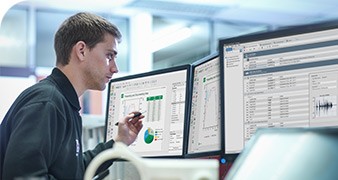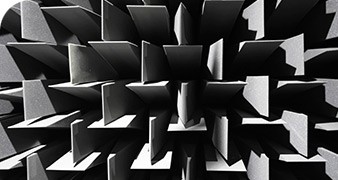Data Acquisition Courses
Learning paths for PC-based data acquisition and data logging
This learning path is for engineers using NI DAQ devices and LabVIEW to develop customized and automated measurements to meet application requirements. It presents the courses, exams, and events that teach you how to configure your hardware, perform accurate single-point and continuous measurements, and synchronize your data acquisition.
New user learning path
After an introduction to the LabVIEW environment, communication mechanisms, and development techniques, developers learn to connect signals; acquire, display, and log measurements; generate waveforms; and select resolution and sample rates.
Software Environment Courses | Description | Recommended Prerequisites |
| Datalogging with FlexLogger course will teach you to acquire, log, and visualize synchronized analog and digital measurements for verification and validation of your electromechanical systems. |
| |
Explore the LabVIEW environment, dataflow programming, and common LabVIEW development techniques in a hands-on format. |
| |
Design, implement, and distribute stand-alone applications using LabVIEW and apply single- and multiple-loop design patterns for application functionality. |
DAQ Hardware Courses | Description | Recommended Prerequisites |
| Explore the LabVIEW environment, dataflow programming, and common LabVIEW development techniques in a hands-on format. | ||
Setting Up, Acquiring Data, and Maintaining Your CompactDAQ System | Learn how to setup hardware setup, integrate software, and maintain your system in this high-level introduction to the CompactDAQ system. |
|
For users working with a PXI hardware system, explore the components of PXI systems and learn how to connect, set up, troubleshoot, and maintain the hardware safely |
| |
Explore the fundamentals of synchronization and the NI software and hardware tools available to implement synchronization methods. |
Experienced user learning path
For those who need to integrate data acquisition as a component in a large application or add advanced functionality such as synchronization or handling large quantities of data, advanced LabVIEW training is recommended.
Course Name | Description | Recommended Prerequisites |
Learn structured best practices to design, implement, document, and test LabVIEW applications. | ||
The second LabVIEW certification exam validates the ability to design and develop functional programs while minimizing development time and ensuring maintainability through proper documentation and style. |
| Courses for NI CompactRIO | Description | Recommended Prerequisites |
Developing Embedded Applications Using CompactRIO and LabVIEW Real-Time | (Instructor-led only) Learn how to efficiently design, prototype, and deploy a reliable embedded control and monitoring application. | |
Developing Deterministic Applications Using LabVIEW Real-Time | (On-demand only) Learn how to efficiently design, prototype, and deploy a reliable embedded control and monitoring application. |
Additional Course Options
Explore Data Interactively Using DIAdem
Learn to use the most important analysis, reporting, and data management features of the DIAdem environment.
Acoustic Test Fundamentals
Learn about the standard methodologies, measurements, and requirements for acoustic test; acoustic data processing methods; and the hardware components of a test station.
Introduction to NI Audio and Acoustics Test Software
Use the NI Audio and Acoustics Test Software to run tests and perform speaker measurements and PDM microphone measurements.
Upgrade to Membership
Planning to take three or more NI instructor-led courses within one year?
A Training Membership provides cost-effective, unlimited access to all NI public classroom and public virtual courses, along with unlimited certification vouchers.


